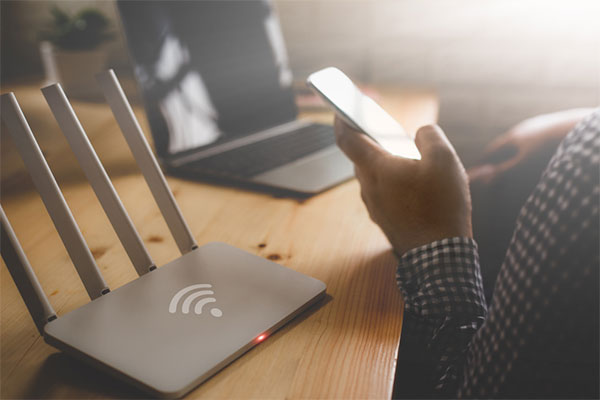Protect Your Router From Internet Security Threats

Routers have long been a favorite target for hackers, and it’s not hard to understand why. Think about it: Your router is responsible for transmitting all the data that flows to and from your home or business. From credit card information to sensitive emails, your router handles it all. From a hacker’s perspective there is simply no better place to be.
In May 2018, Symantec (a leading Fortune 500 software company) reported on a new router malware hack. This particular malware, called VPNFilter, takes up residency inside wireless routers. It is essentially hidden spyware aimed at watching all internet traffic that is routed through your home network. Unlike past router threats, this particular flavor of malware is capable of maintaining a persistent presence on an infected router, even after a reboot.
How do I know if my router is affected?
That’s the tricky part. The VPNFilter is sophisticated enough that even the most tech-savvy computer geeks can’t detect its presence. Symantec has released a long list of potentially affected routers including Asus, Linksys, Netgear, TP-Link, and more. Since there is no simple method of checking your router for VPNFilter, it is safest to assume your router could be infected and take precautionary steps to fix/and or protect your device.
Router Software Updates – DO IT!
Router manufacturers typically roll out software updates throughout the year to address security problems such as this. If your router has the latest updates, you’re much less likely to be infected with VPNFilter, or other destructive malware. This is because most malware appears to take advantage of software vulnerabilities that have already been identified in the past.
Some routers are set to automatically install these updates as they roll out, however, that is not always the case. If your router does not have the latest software update, factory resetting your router – followed by a software update – is probably the safest course of action. This will remove any hidden router malware (including VPNFilter) and will help keep your home network protected. However, please remember that if you choose to factory reset your router, all of your internet settings (IP information, wireless password, and any other custom settings you have created) will be erased. These settings will need to be reprogrammed in order to resume internet access. If you’re not comfortable with software updates or router programing, please contact our Tech Support. Remember, our Tech Support is FREE and available 24/7.
Other Important Tips
Get your router’s app. If you purchased your router from ATC, don’t forget to download the app to your smartphone. Both Netgear and Linksys offer helpful apps that can help you take charge of your home network. From parental controls, to remote reboots and network maps, these convenient apps are a must for all households. The Netgear “Genie” app, and the “Linksys” app are both FREE and available to download on any mobile device.
Use WPA2 security protocol. The security protocols for routers improve over time, which means the old ones get outdated. In January, for example, the Wi-Fi Alliance announced enhanced security features that will be included in the latest standard—WPA3—expected to roll out later this year.
Currently, the best security is provided by a protocol called WPA2-AES, but your router may let you use another standard, such as the older WEP protocol, instead. (Sadly, acronyms are unavoidable when discussing router security.)
In settings, make sure you have WEP turned off and WPA2-AES turned on. Unfortunately, older routers may not be equipped with newer protocols, so this may not be an option on all routers. If that’s the case, it’s probably time to replace your router.
Use strong passwords. This is the simplest and most important thing you can do to protect your home network from unwanted guests and security threats. For tips on how to create, remember, and manage all your passwords, check out our short Password Tips & Tricks video.
Consider changing your router’s admin login password. In order to access any of your router’s features (including changing your wireless password), you must log into your router’s admin settings. For Linksys routers, the admin username and password are both “admin”. For Netgear routers, the default username is “admin”, while the default password is “password”. Regardless of what brand your router is, it’s a good idea to change the admin default router password. Otherwise anyone can log into your router and gain access to your home network.
